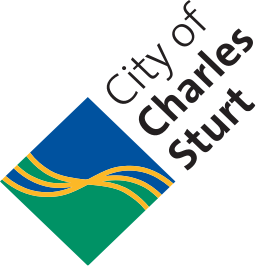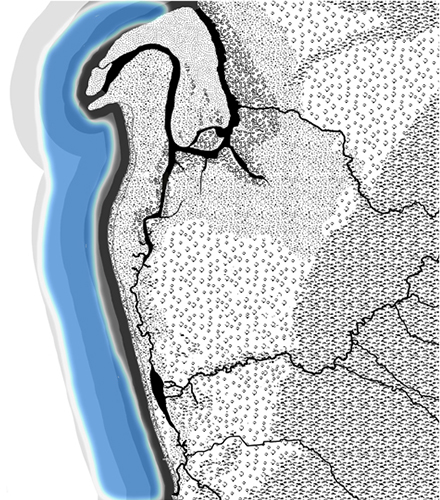
Wonggayerlo is the sea, the foreshore and the sky, the place where the sand dunes rise straight up from the sea, like a forehead, and run in certain directions, like the veins down your arm. Kaurna meyunna have a strong connection to Wonggayerlo. The coastal dunal systems were essential living places during the time of Woltatti (Bush Turkey Totem and Constellation); the hot summer months when the north wind would come; the time of the mosaic burn off. The landward dunes were a major sleeping place where the old people were laid to rest.
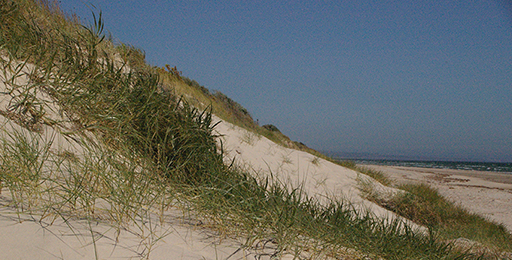
Tennyson Dunes, 2000s
The dunal systems provided protected camping grounds to shelter from the wind and the heat of the sun. Here Kaurna meyunna would prepare and mend fishing nets to catch the runs of fish between the sand bars running along the coastline. They were highly skilled in the use of fibre and made a multitude of nets, string, baskets like tainkyedli rush bag and mats for use throughout the seasons of movement to and from the known camp sites and food places. Their intimate knowledge of fibre, or deeper understanding of the culture of fibre, ensured that the makers knew how to best utilise their time within the natural environmental cycles to collect food and meet their material needs. Here they would also make pirri kuya fish hooks out of bone and shells. The sea snail shells could be used to make sharp and fine hooks, the natural curves of the shell, thin but strong, were able to be broken, shaped and edged into small and large fishing hooks. Line and string were made from the reeds.
The coastline was a very productive seasonal area. The intersection between the rivers and the ocean, the salt/fresh water mixed estuaries, were hotspots of plant and animal diversity. The shallow sand bars and seagrass beds of Wonggayerlo allowed hunters to walk offshore to hunt kuya fish and crustaceans along the channels between sandbars and amongst the seagrass. Hunters could set nets across sand channels to trap fish. They would use their spears to capture larger fish as they rested or patrolled the inshore sand bars and channels. They would also fish and hunt with fire by night. Spears, nets and fishing line and hooks were all used to catch fish like whiting, bream, mullet, flathead, flounder, mulloway, garfish and butterfish as well as sand crabs and blue crabs. There is a painting of Kaurna men net fishing further down the coast at Second Valley.
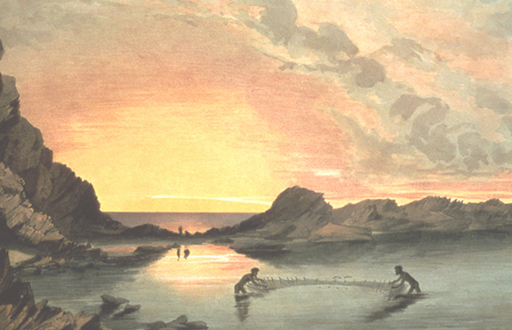
Coast Scene near Rapid Bay, Sunset Natives Fishing with Nets, 1847, G. F. Angas (AGSA)
Kaurna meyunna harvested a wide range of crustaceans, which included various molluscs and razor fish on low tide. Sea snails (wariners, periwinkles) and abalone were an important food and could be found congregated on exposed rocky reefs amongst the expanse of seagrass and sand. The seagrass that would wash up on the coastline provided habitat for seagrass worms that could be collected by the fishermen to use on their hooks and line.
Amongst the dunes and nearby fragmented coastal plains they harvested a range of mai vegetable foods, like the fruits of the karkalla pigface, tilti wild cherry, mantirri muntrie, gutti quandong and nitre bush. They also used a range of plants for medicines. Gums and resins were also harvested for tool making and other uses. Kaurna meyunna hunted sand goanna, snakes, kangaroo rat and various birds and their eggs, especially emu eggs.
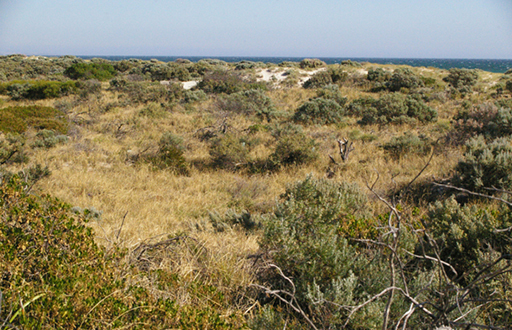
Tennyson Dunes, 2000s
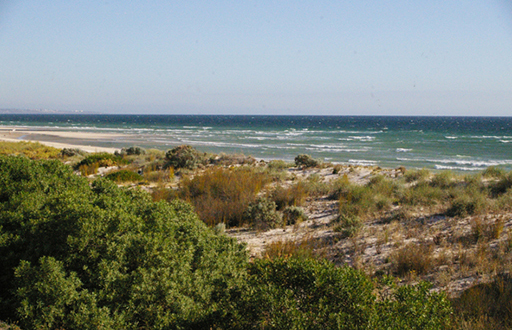
Foreshore, Henley Beach, 2000s
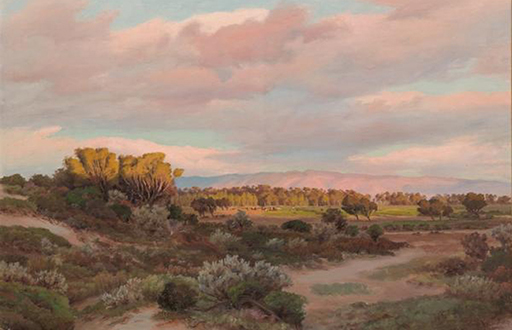
From the Sand Dunes 1899, J. White (AGSA Collection)
